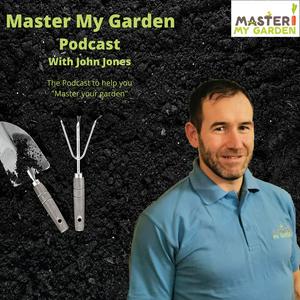-EP275 Brian & Gilly On How Wildacres Nature Reserve In Wicklow is Helping Nature By Restoring Habitats and Encouraging Others To Do The Same!! What Happens When You Plant 15,000 Trees and Create 57 Ponds?
Send Me A Message!! The biodiversity crisis might seem like an insurmountable challenge, but amidst the doom and gloom shines a remarkable story of hope and transformation. Welcome to Wild Acres Nature Reserve in County Wicklow, where a couple's decision to trade corporate careers for conservation has created a thriving ecological paradise.When Brian and Gilly purchased four fields of intensively grazed perennial ryegrass in 2017, they faced a landscape stripped of life. Seven years later, their 34-acre reserve boasts 57 wildlife ponds, 15,000 native trees, and four acres of wildflower meadows teeming with insects, birds, and mammals. From otters playing in the ponds to woodpeckers drumming in the trees, the transformation has been nothing short of miraculous.What makes their story particularly inspiring is how accessible their methods are to everyone. As Brian explains, "Nature is very forgiving. Once you bring the habitats back, it will respond positively." Their experience demonstrates that even small actions can yield remarkable results. A wildlife pond—which can be as simple as a repurposed container on a balcony—can attract diverse aquatic life within days. Native wildflowers, whether in a meadow or container, provide critical food sources for pollinators. These small pockets of habitat, when created across neighborhoods, form vital connectivity that allows wildlife to thrive in urban and suburban settings.Beyond the ecological benefits, Wild Acres highlights the profound human connection to nature. Scientific research now confirms what Brian and Gillian witness regularly: time spent in natural spaces reduces stress hormones, improves mental clarity, and enhances overall wellbeing. Their workshops on pond creation, beekeeping, and wildlife gardening consistently sell out as people seek to reconnect with the natural world and make a positive difference.Ready to create your own patch of biodiversity paradise? Visit Wild Acres online to learn about their upcoming workshops or start simply with a small pond, native plants, or bird feeder in your garden. The journey toward ecological recovery begins with a single step—and as this inspiring couple proves, nature will gladly meet you halfway.You can connect with Wildacres here https://wildacres.ieSupport the showIf there is any topic you would like covered in future episodes, please let me know. Email:
[email protected] Master My Garden Courses: https://mastermygarden.com/courses/Check out Master My Garden on the following channels Facebook: https://www.facebook.com/mastermygarden/ Instagram @Mastermygarden https://www.instagram.com/mastermygarden/ Until next week Happy gardening John
